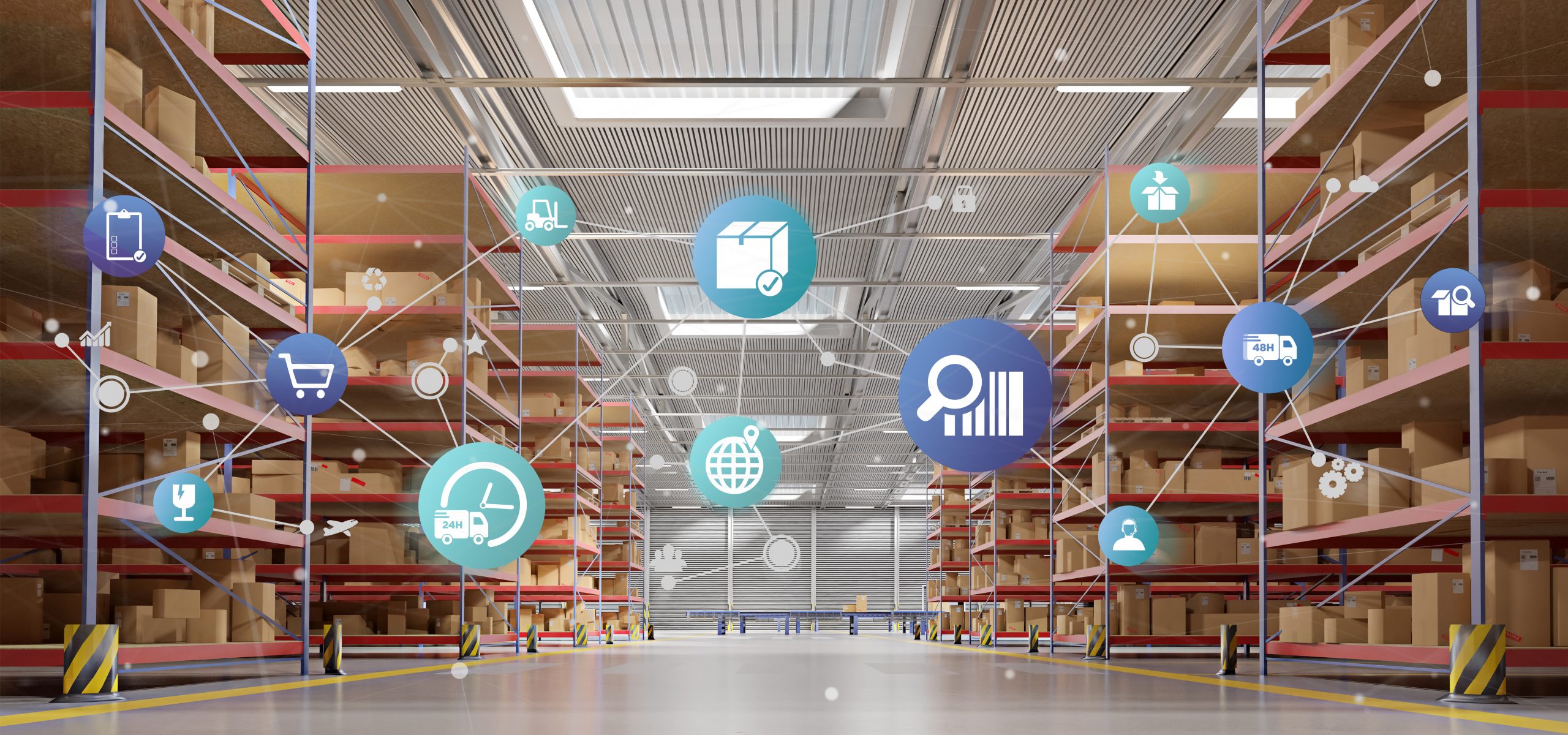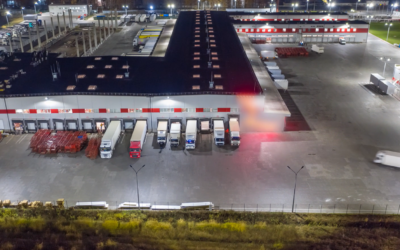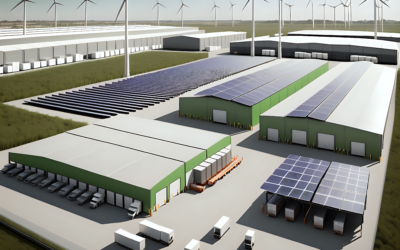According to Advanced Market Analytics (AMA), Global Predictive Analytics Market is expected to grow at a 21.12% CAGR by 2024, making supply chain analytics more important than ever. This information can be used by supply chain leaders by addressing supply chain challenges and reducing costs while improving service levels.
What is Predictive Analytics?
Predictive analytics is all about predicting future trends, such as the new demand in sales or any other important supply chain metrics. Different statistical methods, such as regression, extrapolation or again machine learning, are used in predictive analytics. It does not predict the future but tries to assess, using probability theories, what is likely to happen based on trends and patterns revealed by studying historical data. The more accurate data is available, the more accurate predictions will be. These solutions can bring benefit to different levels, from a single warehouse to even an entire supply chain.
Supply Chain Predictive Analytics
According to the 2020 MHI Annual Industry survey, number of supply chain managers using predictive analytics grew from 17% in 2017 to 30% in 2019. The survey also reports that 57% of the companies that are still not using predictive analytics plan to do so by 2025. There is a strong believe among companies that predictive analytics has the potential to completely transform the supply chain. Its introduction is helping logistics and supply chain companies meet increasing demands. In fact, the logistics industry has identified predictive analytics as having the biggest impact on the supply chain this decade. This movement towards anticipatory logistics is already widely accepted among industry decision-makers. Indeed, a study ran by the Council of Supply Chain Management Professionals revealed that 93% of shippers and 98% of third-party logistics firms feel like data-driven decision-making is crucial to supply chain activities, and 71% of them believe that big data improves quality and performance.
It might be complicated to deeply understand this technology, how it works, where it can be applied etc. However, the Global Predictive Analytics market may see market size of $18.19 Bn by 2024. If companies adopt predictive analytics, they will be able to refine their supply chains to reach efficiencies that would have never been possible before. All through the years, data collection will continue, enabling decisions to be taken on future trends rather than on historical data.
Supply Chain Managers and Predictive Analytics
Predictive analytics enables supply chain professionals to improve several aspects such as logistics, predictive maintenance, demand forecast, pricing strategies and inventory management.
Logistics
As transport costs represent a significant portion of the final product price, predictive analytics enable to know the frequency and quantity of transport needed to meet with demand while minimizing costs. Fastest routes according to traffic, distance, weather and delivery point can be known thanks to predictive-route-planning. Going even further, vehicle conditions, fuel consumption as well as driving style can be monitored by smart sensors.
Predictive maintenance
Predictive analytics can anticipate the replacements needed on specific machines and by doing so, reduce the risk of technical downtime. The best example to illustrate how firms could anticipate maintenance is the Airbus Skywise platform. Indeed, it predictively tracks Delta Air Lines aircrafts and monitors the condition of components. By doing so, the airline can avoid unwished downtime by anticipating the maintenance of its aircrafts.
Forecast of the demand
Demand is influenced by several factors, and this complexity makes it hard to make an accurate forecast. However, thanks to predictive analytics, the combination of historical data and market intelligence can generate very precise demand forecast, allowing the rebalancing of assets across any logistic network at a minimal cost.
Pricing strategies
When the demand for a product is forecasted, it is possible to dynamically adjust the price to what the market can stand. The best illustrative example of predictive price is the strategy implemented by Uber and by some airlines.
Inventory management
Supply chain managers, by using predictive analytics, can determine the optimal level of inventory to meet the demand at reduced costs for each location. This enables to reduce safety stock levels as well as inventory. When a company has multiple distribution centres, this ability becomes very useful as it helps supply chain managers to know where the stock should be held (centrally or regional).
Figure1: Achieved results by companies that embraced big data analytics
Figure 2: Companies that embed big data analytics in their operations are far more likely to generate a range of important supply chain benefits
New potential use cases
While companies keep digitizing their operations, opportunities for predictive analytics throughout the supply chain are blooming. As a notable potential use case, we could mention the implementation of real-time measurement using IoT and RFID devices to monitor equipment and parts. This would enable heads of supply chains to track shipments in real-time and thus know precisely when it will be delivered to customers. Added to that, by knowing the delivery date accurately, last-minute changes would be facilitated.
Case study
Maersk Line
Maersk Line is the largest shipping company in the world, operating in more than 130 countries and owning over 600 container vessels. The group transports goods for a yearly value of c. $675 Bn and consistently adapts to changing times by embracing predictive analytics. Thanks to such use, the company has a better visibility to assess if one of its ships is wasteful and can also save millions of dollars repositioning empty containers.
UPS
UPS is an international package delivery and supply chain management company. In one day, on average, the group handles 19 million packages for over 96,000 vehicles on the road. It has been shown that UPS could save $50 million if it manages to reduce every driver’s route by 1 mile per day, so embracing predictive analytics would allow to save huge amounts each year. For this reason, UPS invests $1 Bn annually in technology like predictive analytics, and to also compete with new consumer demand to make their operations the more efficient possible. Around $200 million in costs could be saved thanks to real-time data and analytics when its Network Planning Tools software will be fully deployed during year 2020.
Overall Results of Predictive Analytics in Supply Chain
Each company forecast requirements differently, with different time horizons, but the ones that use predictive analytics are one step ahead (Google, Amazon, Netflix etc.). According to Gartner, the world’s leading research and advisory company, organizations realizing a high return on investment are the one embracing predictive supply chains. Added to that, their inventories decrease by 20% to 30% due to the accurate forecast in demand.
With predictive analytics, there is no place anymore for guessing the future by looking at historical data, heads of supply chain can anticipate and prepare for the future based on trends that are accurately computed.
A New Future for Logistics and Supply Chain
We have thus illustrated in this article that predictive analytics is crucial to enable cost-savings and improve efficiency. We are shifting from a human-driven decision-making industry to a data-driven one. As reported by Gartner, more than 3 out of 4 heads of supply chain stated that their digital transformation projects are not aligned. One solution could be the hiring of a Chief Digital Officer in order to guide the digital transformation and start transforming the supply chain by driving it by data. Unfortunately, there are businesses that cannot afford such services. Another option would be to work with a technology provider to provide predictive analytics services for logistics.
In the end, investing in a predictive analytics solution might no longer be an option – it has become a necessity to maintain competitiveness with other players that have still embraced this solution. Both consumers and companies keep raising expectations to receive their shipments faster and cheaper. Therefore, those logistics and supply chain businesses that do not invest in predictive technologies within their operations, might simply not survive in today’s demanding market.
Notes
- Riverlogic, March 31, 2020
- Transmetrics Blog, July, 2019
- Chain of Demand, April 12, 2019





